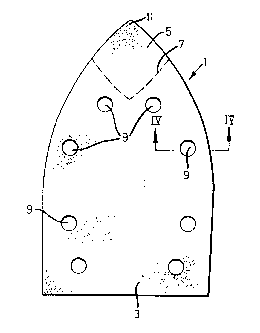Some of the information on this Web page has been provided by external sources. The Government of Canada is not responsible for the accuracy, reliability or currency of the information supplied by external sources. Users wishing to rely upon this information should consult directly with the source of the information. Content provided by external sources is not subject to official languages, privacy and accessibility requirements.
Any discrepancies in the text and image of the Claims and Abstract are due to differing posting times. Text of the Claims and Abstract are posted:
| (12) Patent: | (11) CA 2156199 |
|---|---|
| (54) English Title: | ABRASIVE SHEETS |
| (54) French Title: | FEUILLES ABRASIVES |
| Status: | Term Expired - Post Grant Beyond Limit |
| (51) International Patent Classification (IPC): |
|
|---|---|
| (72) Inventors : |
|
| (73) Owners : |
|
| (71) Applicants : |
|
| (74) Agent: | MARKS & CLERK |
| (74) Associate agent: | |
| (45) Issued: | 2001-11-27 |
| (22) Filed Date: | 1995-08-16 |
| (41) Open to Public Inspection: | 1996-02-26 |
| Examination requested: | 1998-07-31 |
| Availability of licence: | N/A |
| Dedicated to the Public: | N/A |
| (25) Language of filing: | English |
| Patent Cooperation Treaty (PCT): | No |
|---|
| (30) Application Priority Data: | ||||||
|---|---|---|---|---|---|---|
|
An abrasive sheet 1 for a sanding or polishing machine,
comprising a body portion 3 and a tip portion 5 providing a
working point 11, the tip portion 5 being defined by a
weakened region 7 between the body portion 3 and the tip
portion 5, wherein the tip portion 5 can be separated from
the body portion 3, turned through an angle (Figure 2) and
re-positioned adjacent the body portion 3 to change the
working point 11. As a result, an iron-shaped abrasive
sheet, for example, can be provided with a plurality of
working points 11. The sheet can, therefore, be used for
longer periods before it is worn out.
Feuille abrasive 1 pour sableuse ou polisseuse, comprenant une portion de corps 3 et une portion de pointe 5 formant un point de travail 11, la portion de pointe 5 étant définie par une région de faiblesse 7 entre la portion de corps 3 et la portion de pointe 5, la portion de pointe 5 pouvant être séparée de la portion de corps 3, tournée selon un certain angle (figure 2) et repositionnée adjacente à la portion de corps 3 pour changer la pointe de travail 11. Par suite, une feuille abrasive en forme de semelle de fer à repasser, par exemple, peut être munie dune pluralité de points de travail 11. La feuille peut donc être utilisée pendant des périodes prolongées avant dêtre usée.
Note: Claims are shown in the official language in which they were submitted.
Note: Descriptions are shown in the official language in which they were submitted.

2024-08-01:As part of the Next Generation Patents (NGP) transition, the Canadian Patents Database (CPD) now contains a more detailed Event History, which replicates the Event Log of our new back-office solution.
Please note that "Inactive:" events refers to events no longer in use in our new back-office solution.
For a clearer understanding of the status of the application/patent presented on this page, the site Disclaimer , as well as the definitions for Patent , Event History , Maintenance Fee and Payment History should be consulted.
| Description | Date |
|---|---|
| Inactive: Expired (new Act pat) | 2015-08-16 |
| Inactive: IPC from MCD | 2006-03-11 |
| Grant by Issuance | 2001-11-27 |
| Inactive: Cover page published | 2001-11-26 |
| Inactive: Final fee received | 2001-08-14 |
| Pre-grant | 2001-08-14 |
| Notice of Allowance is Issued | 2001-07-09 |
| Notice of Allowance is Issued | 2001-07-09 |
| Letter Sent | 2001-07-09 |
| Inactive: Approved for allowance (AFA) | 2001-06-29 |
| Inactive: Correspondence - Formalities | 1999-02-08 |
| Amendment Received - Voluntary Amendment | 1998-10-15 |
| Letter Sent | 1998-09-09 |
| Inactive: Status info is complete as of Log entry date | 1998-09-08 |
| Inactive: Application prosecuted on TS as of Log entry date | 1998-09-08 |
| All Requirements for Examination Determined Compliant | 1998-07-31 |
| Request for Examination Requirements Determined Compliant | 1998-07-31 |
| Application Published (Open to Public Inspection) | 1996-02-26 |
There is no abandonment history.
The last payment was received on 2001-08-07
Note : If the full payment has not been received on or before the date indicated, a further fee may be required which may be one of the following
Please refer to the CIPO Patent Fees web page to see all current fee amounts.
Note: Records showing the ownership history in alphabetical order.
| Current Owners on Record |
|---|
| BLACK & DECKER INC. |
| Past Owners on Record |
|---|
| COLIN PUGH |
| ERIC COCKBURN |
| MICHAEL MARTIN |